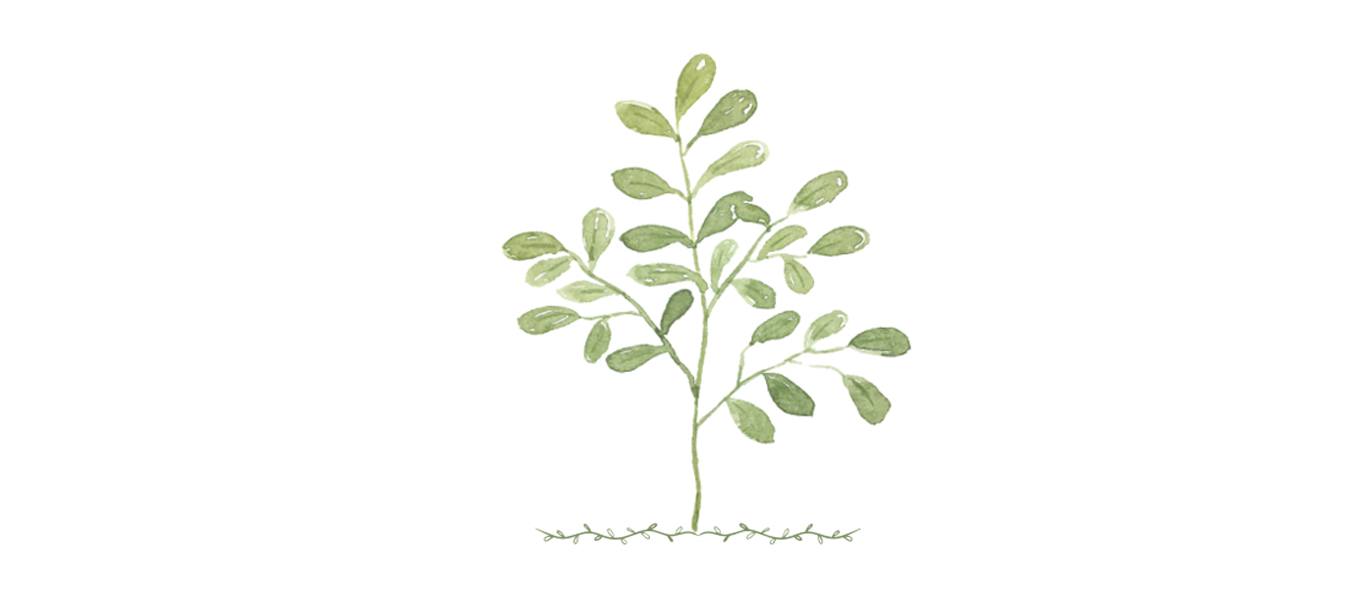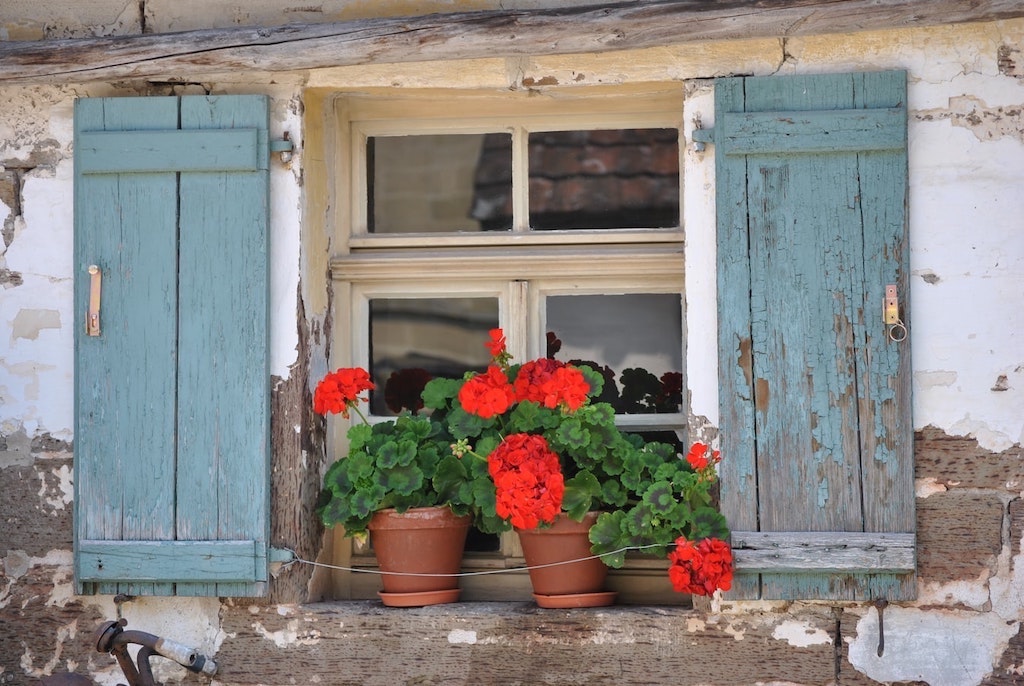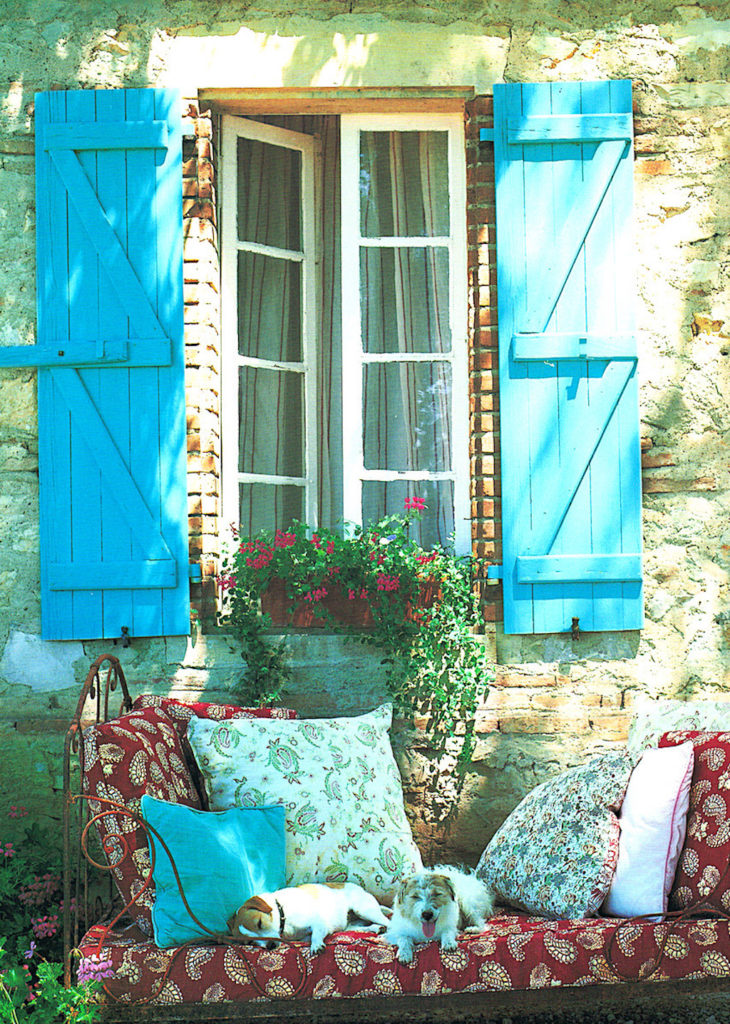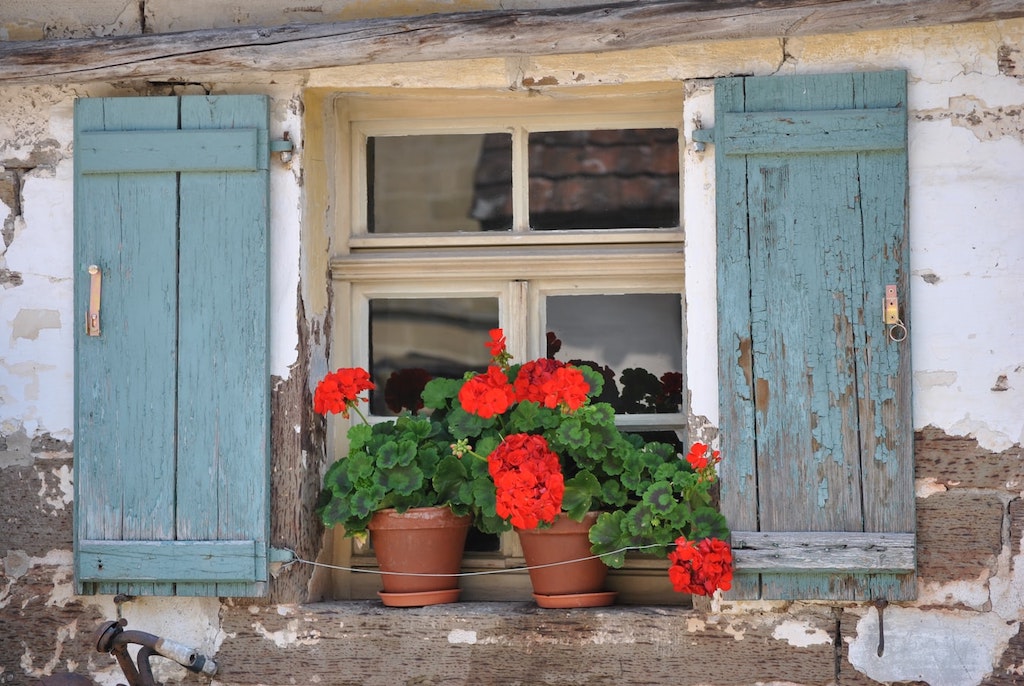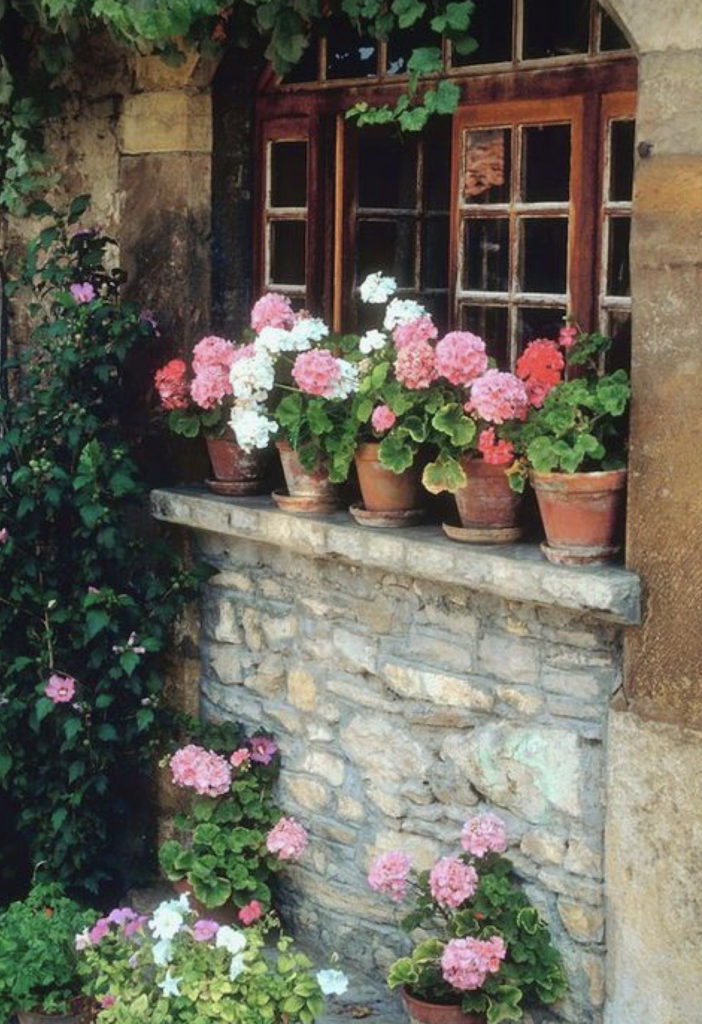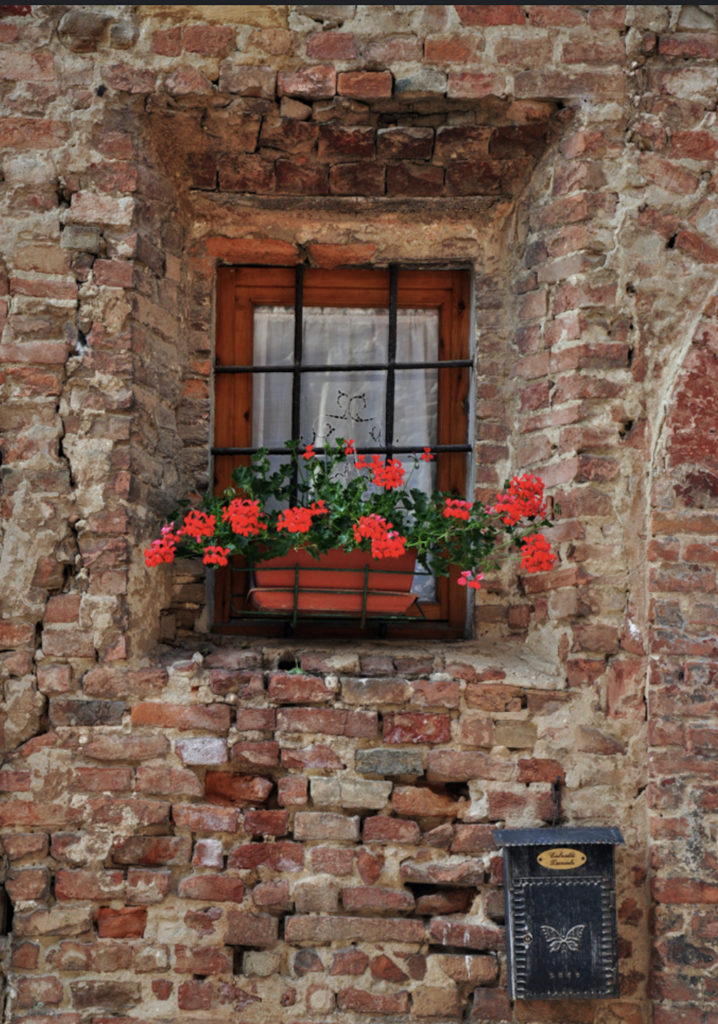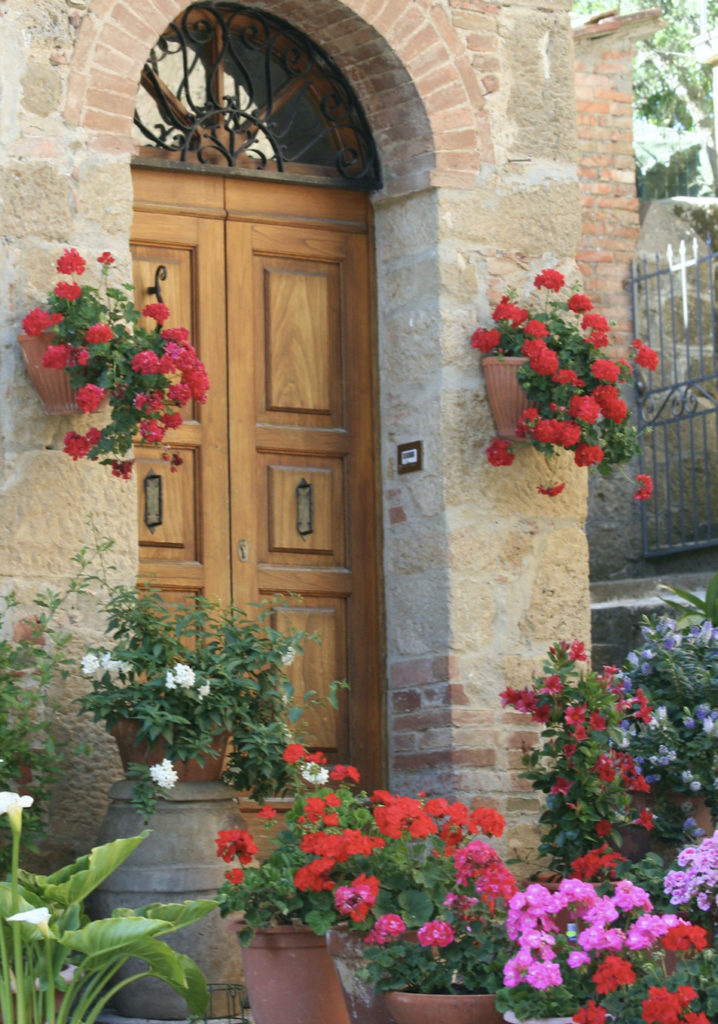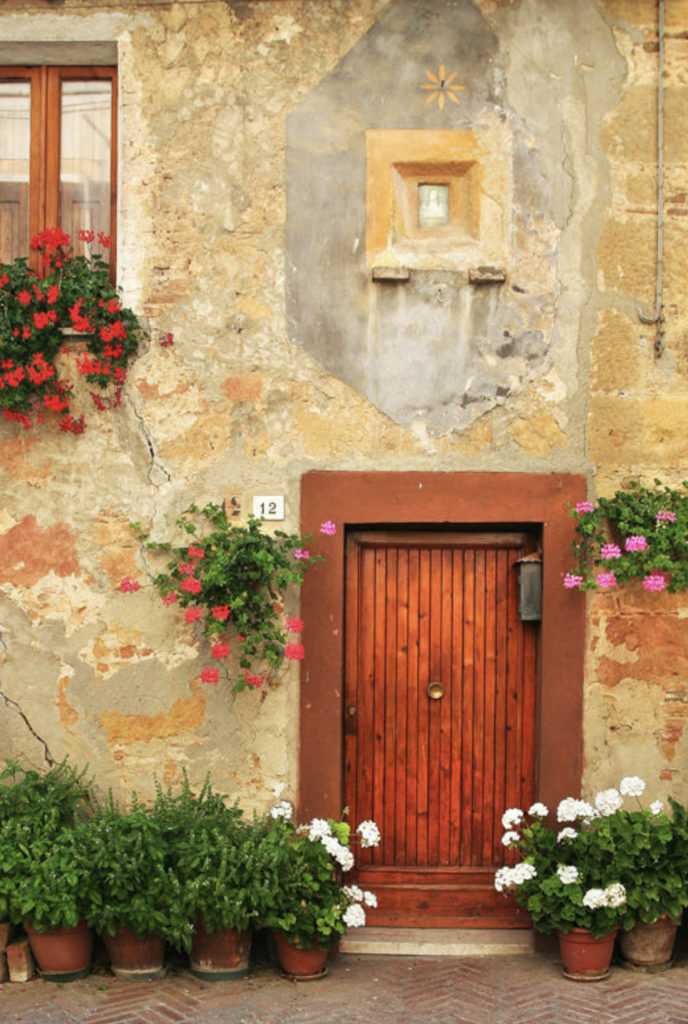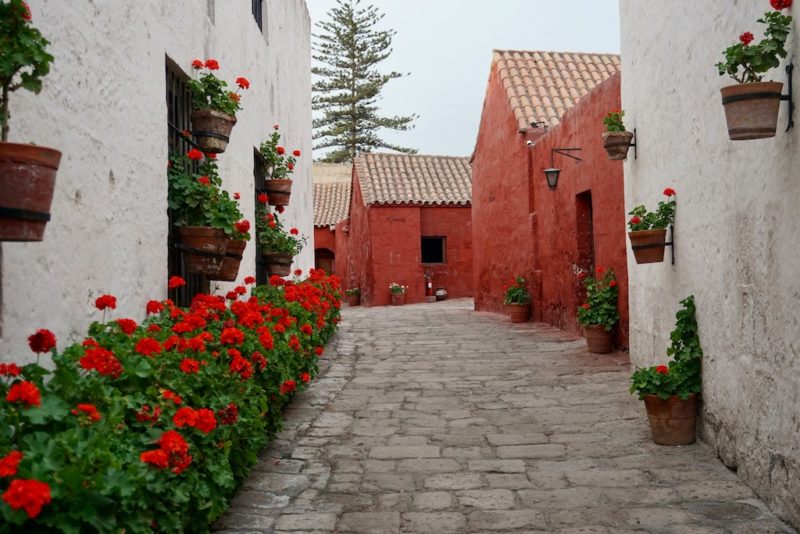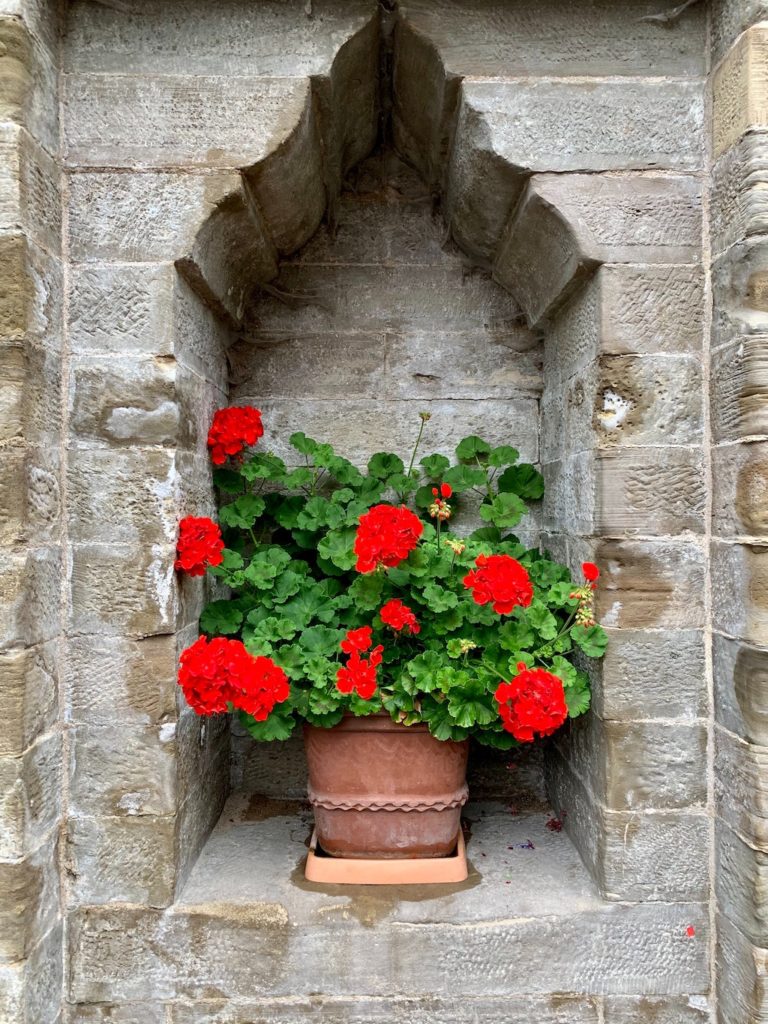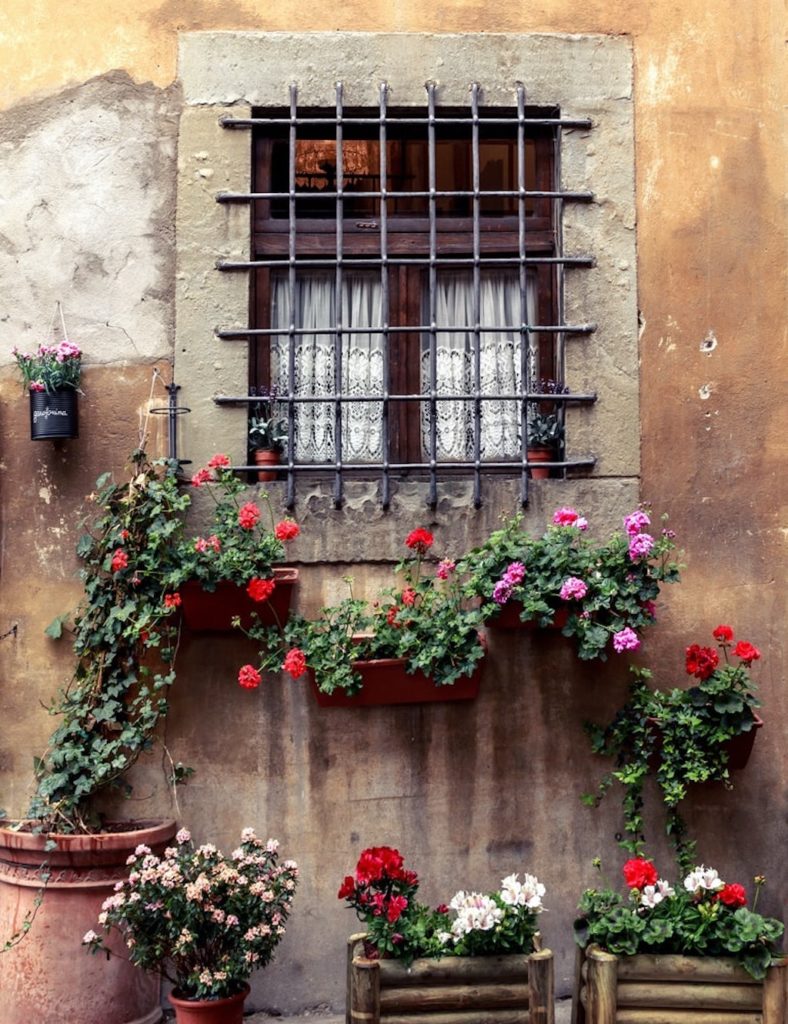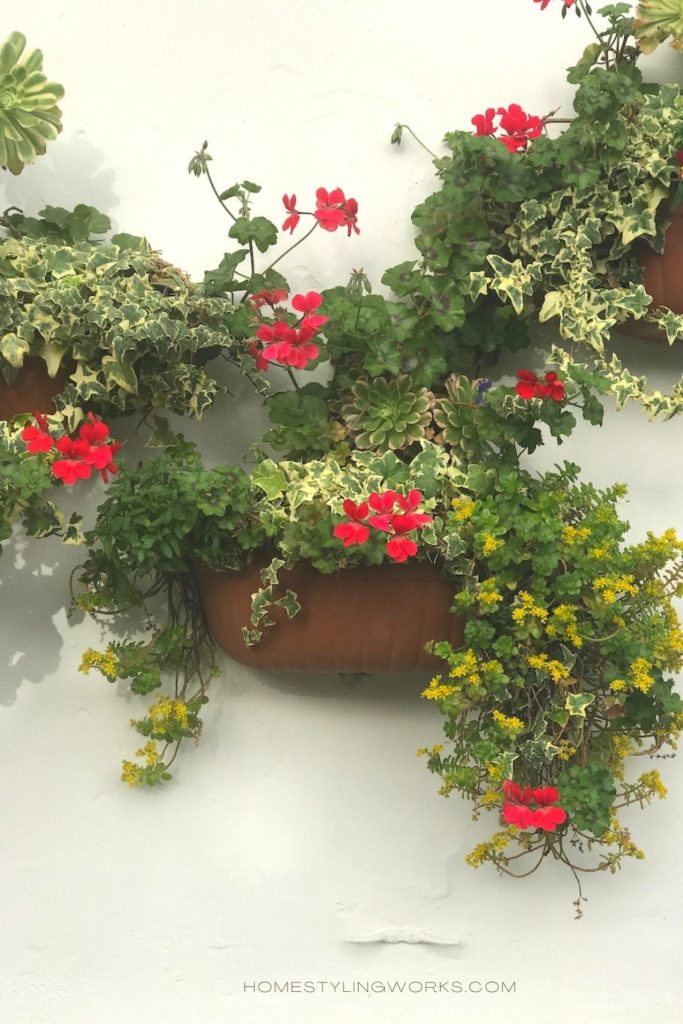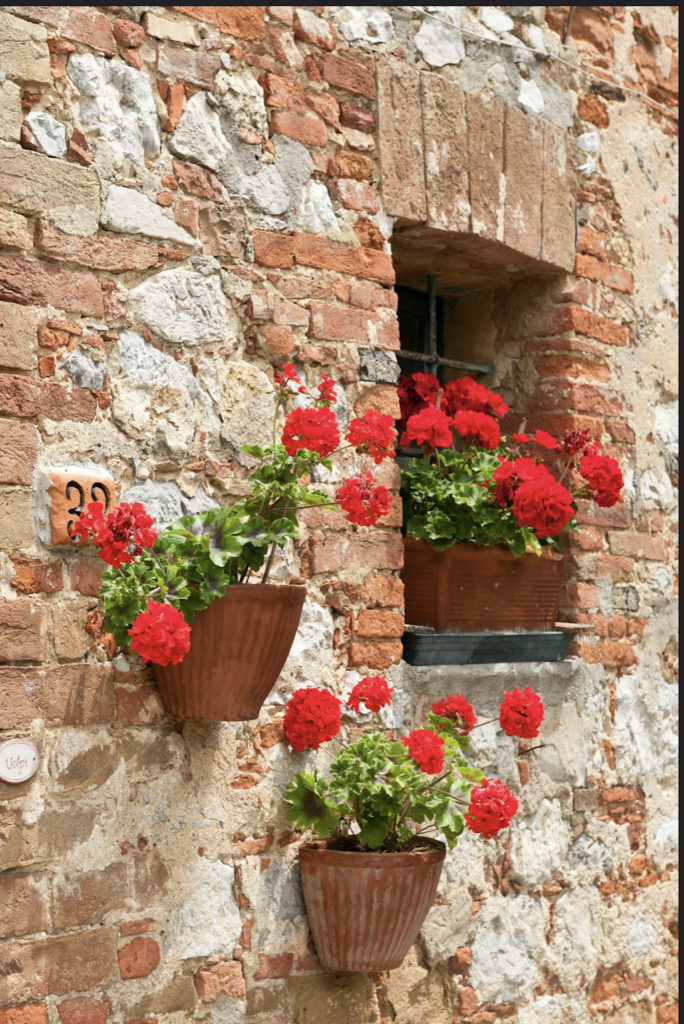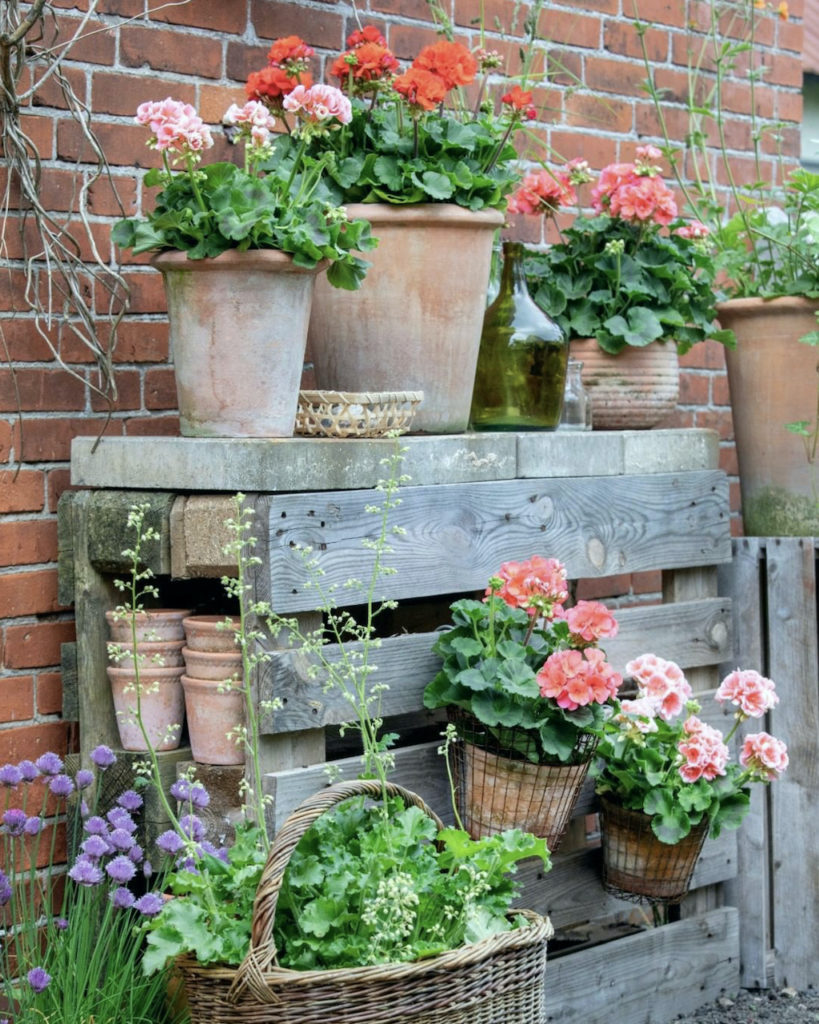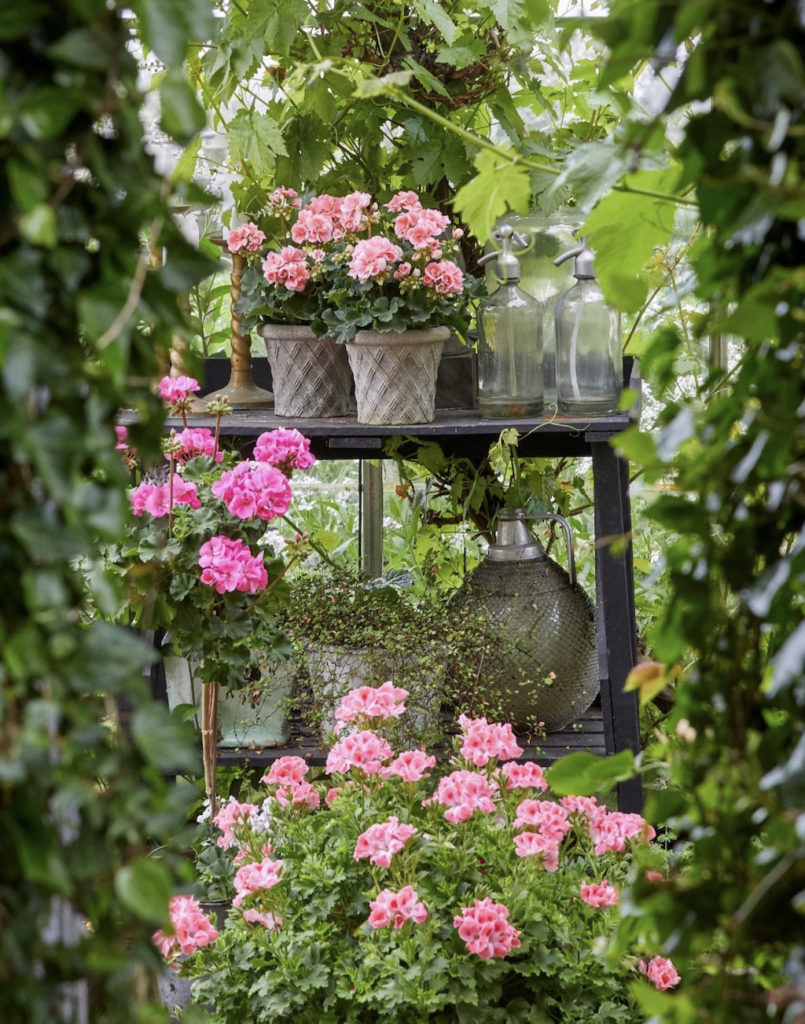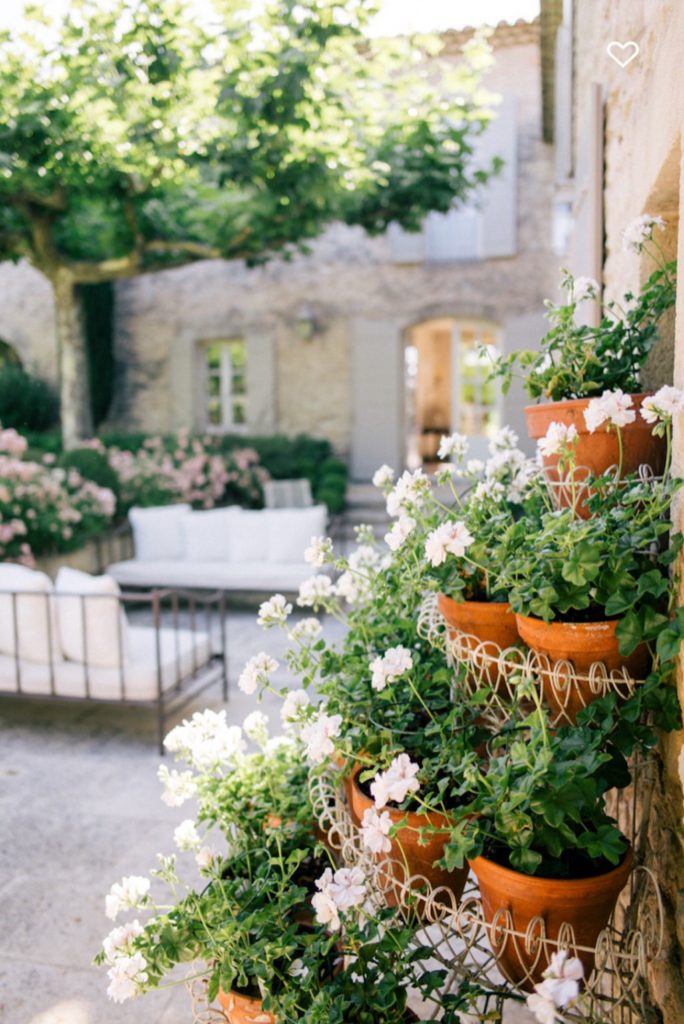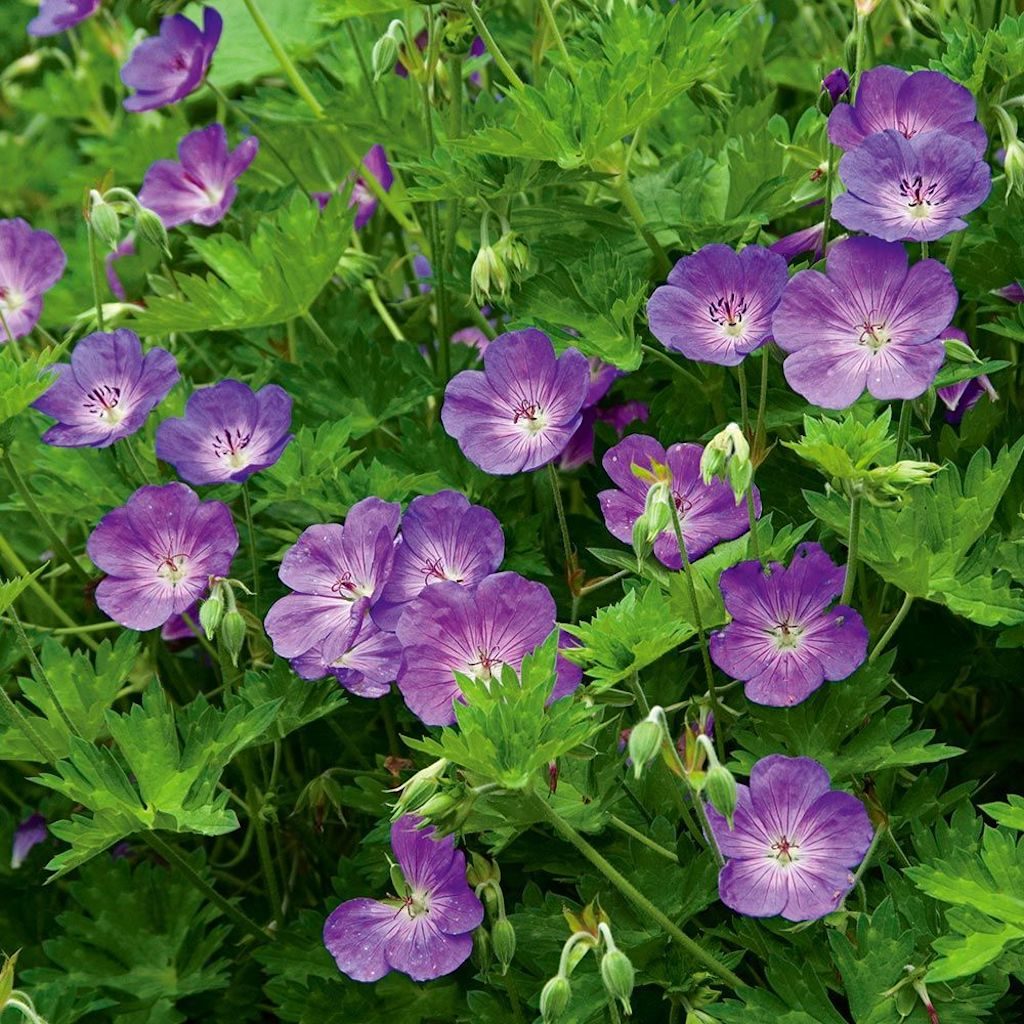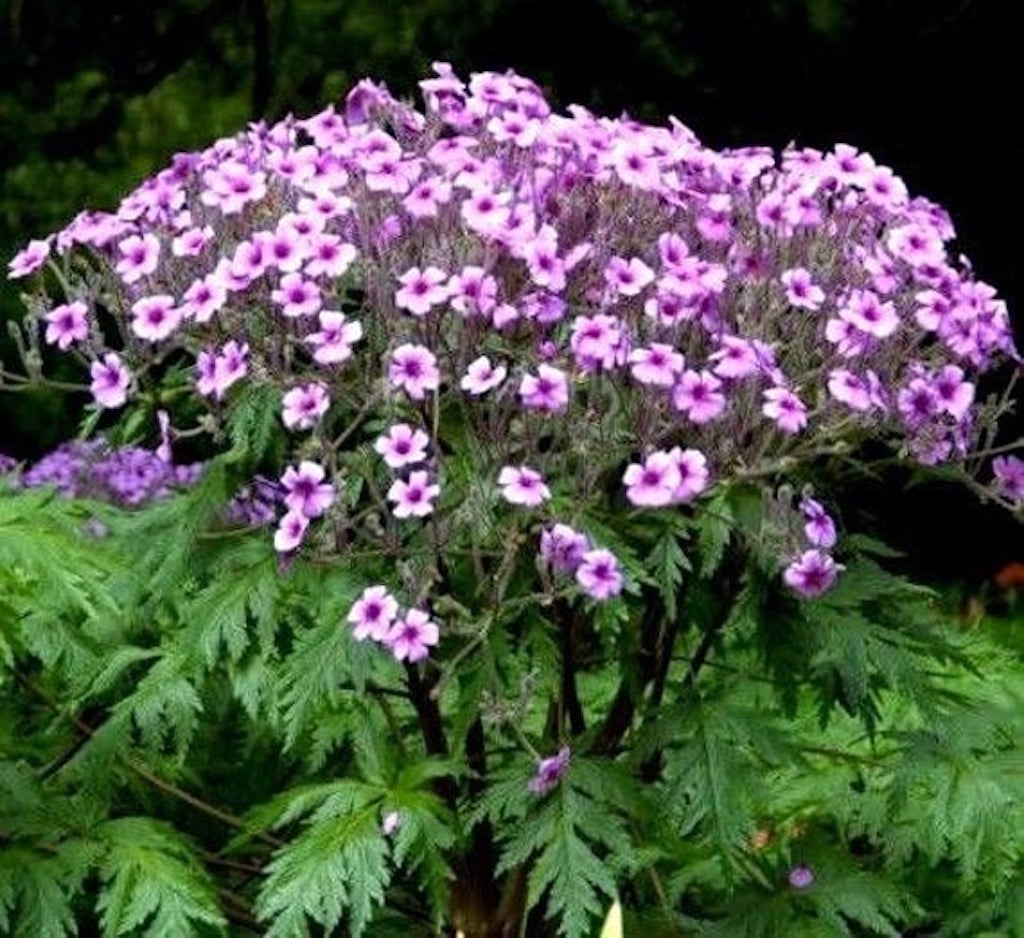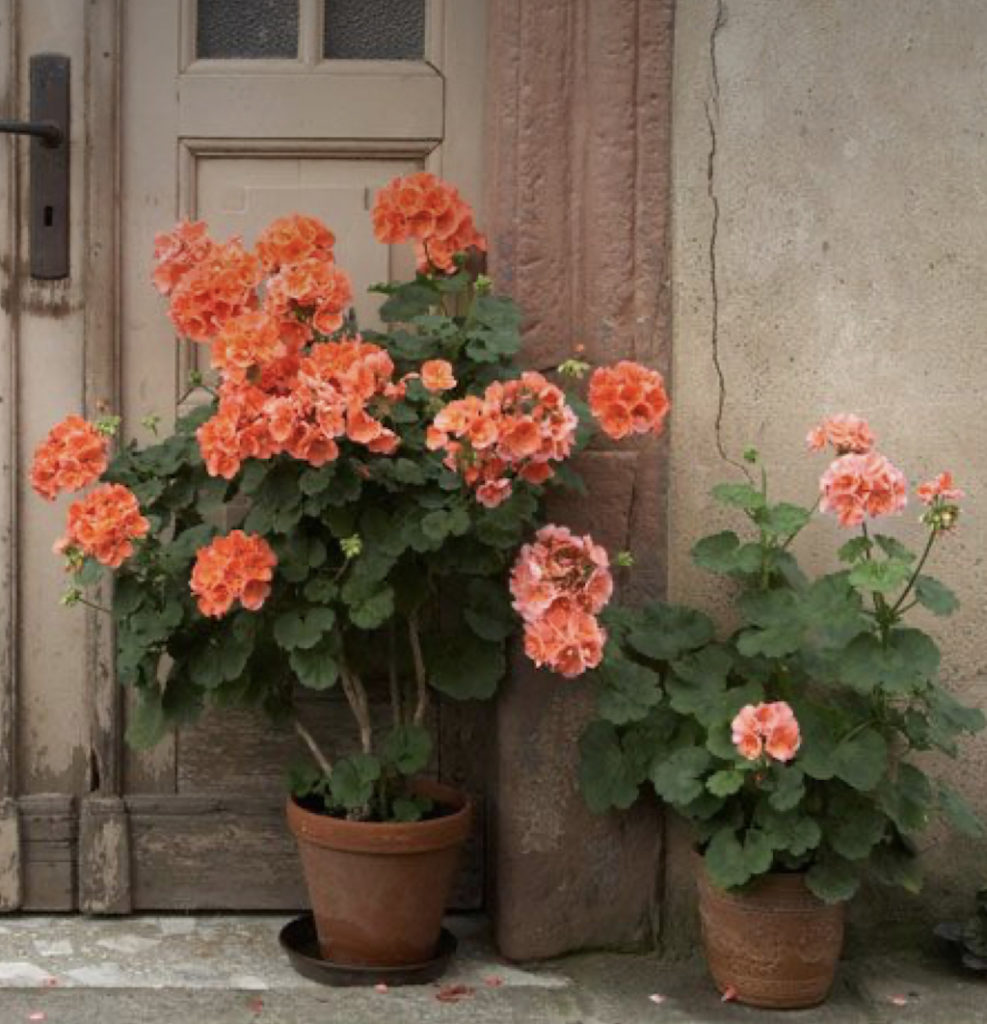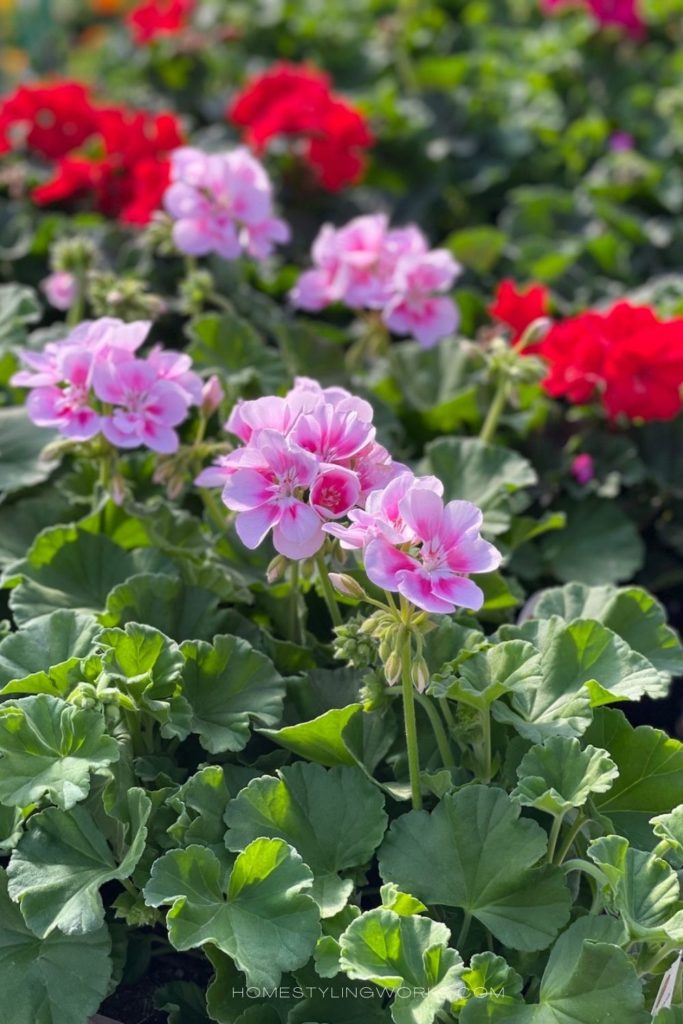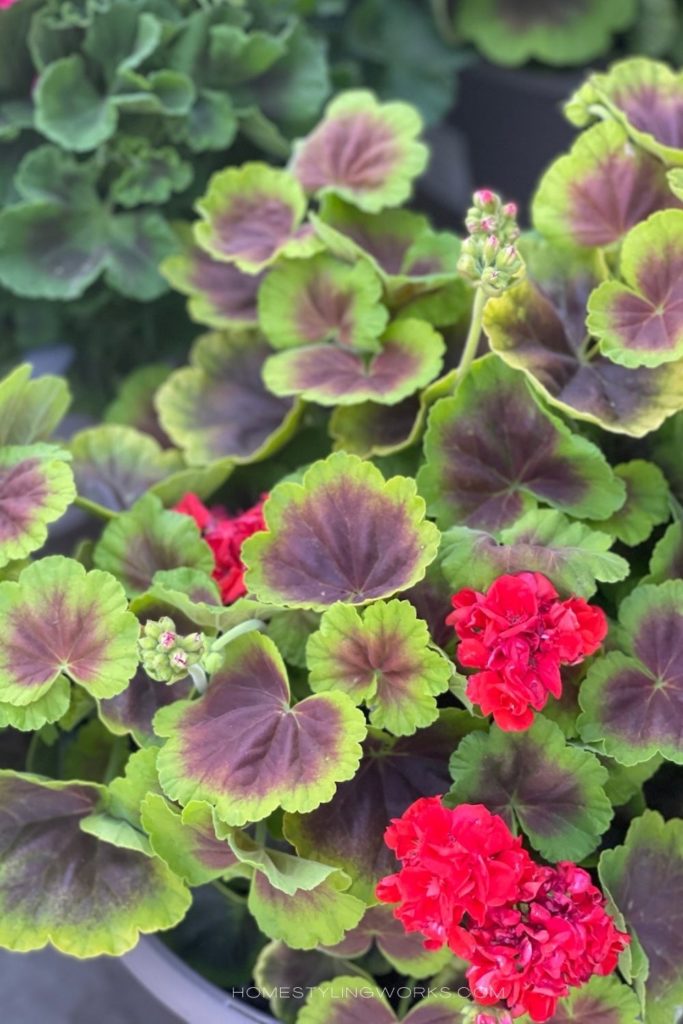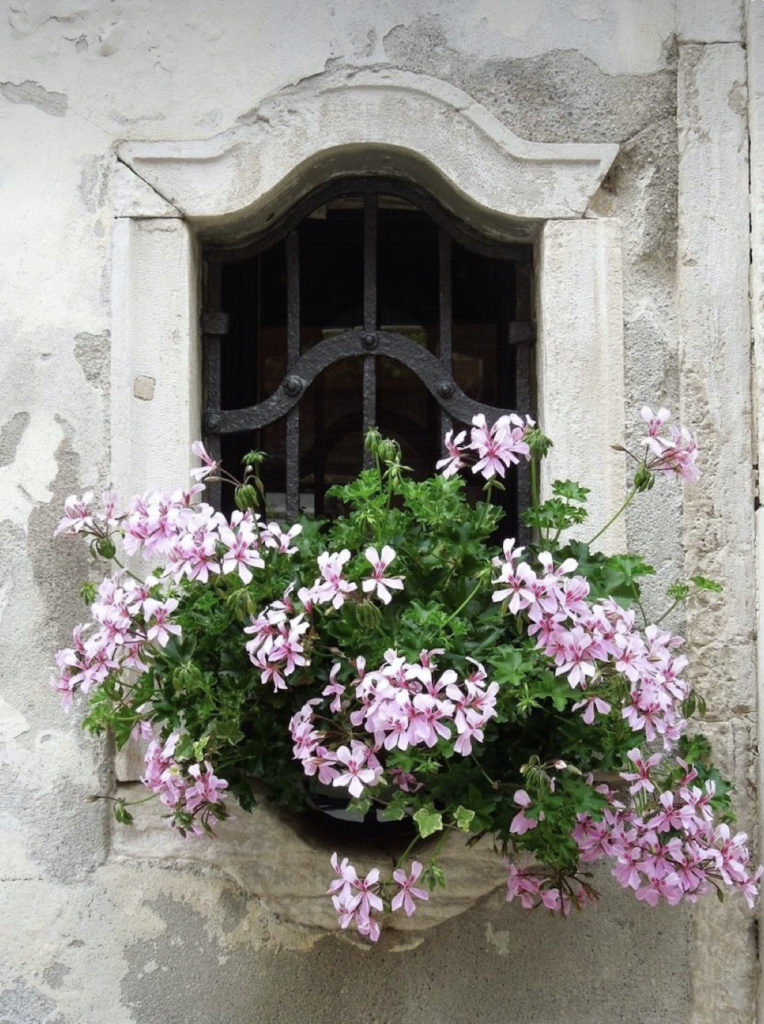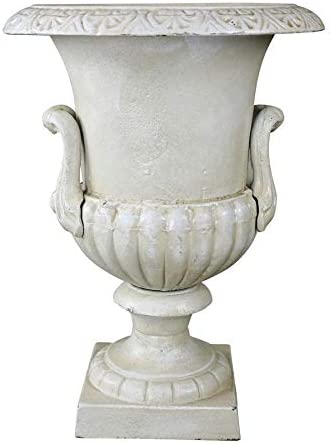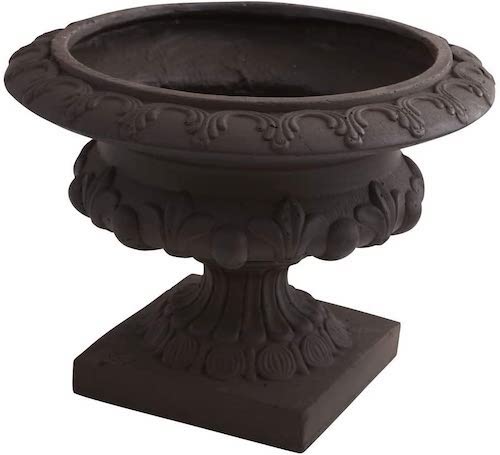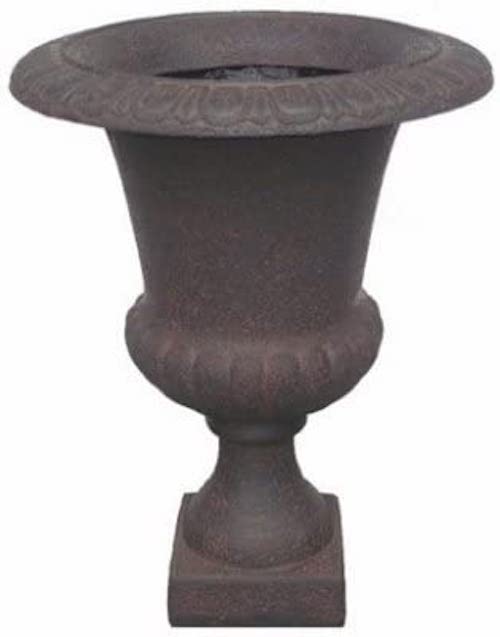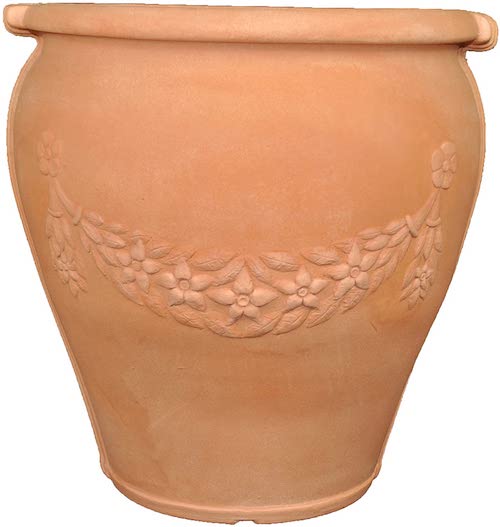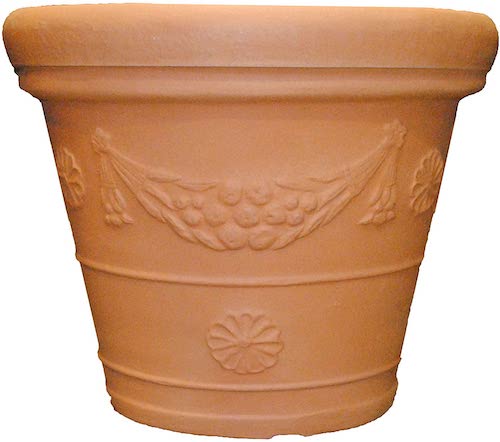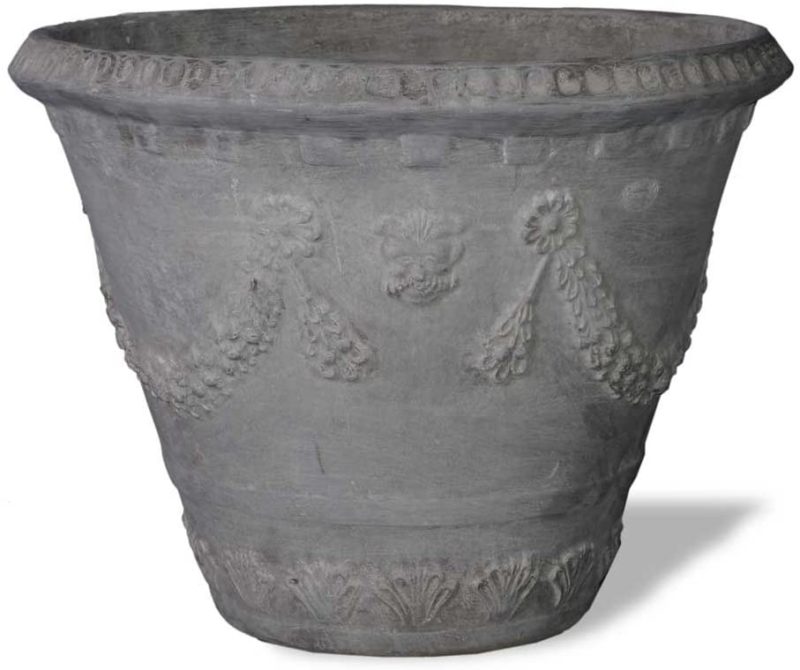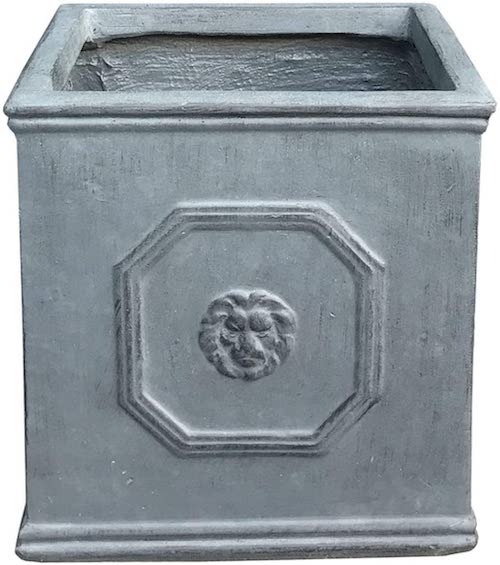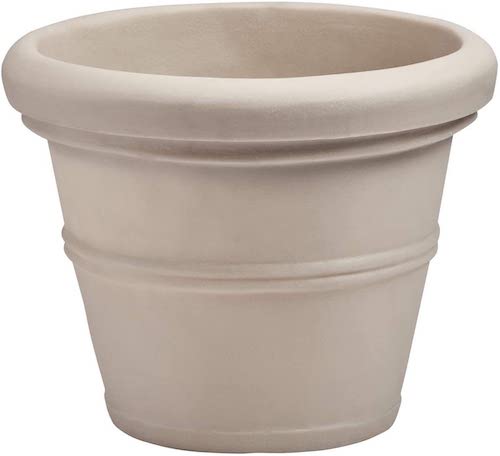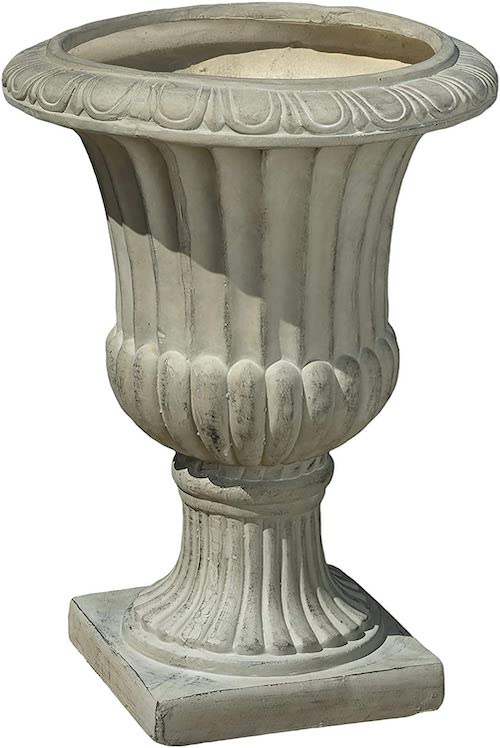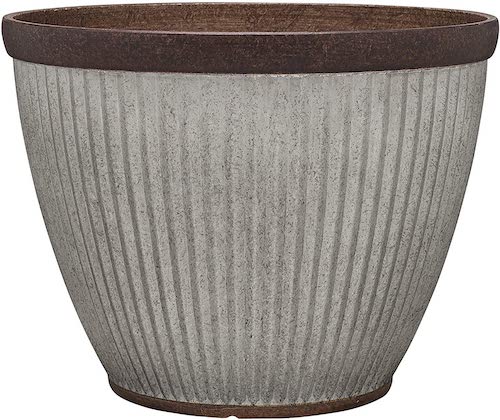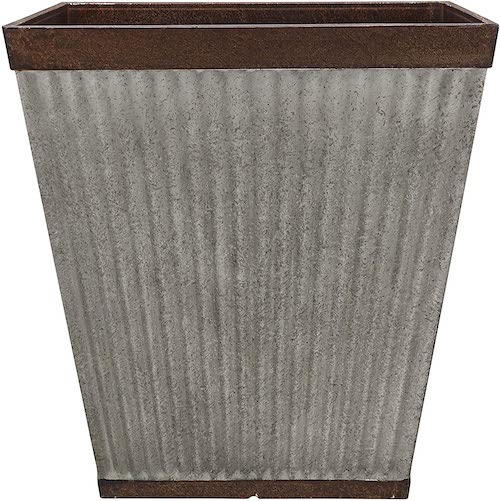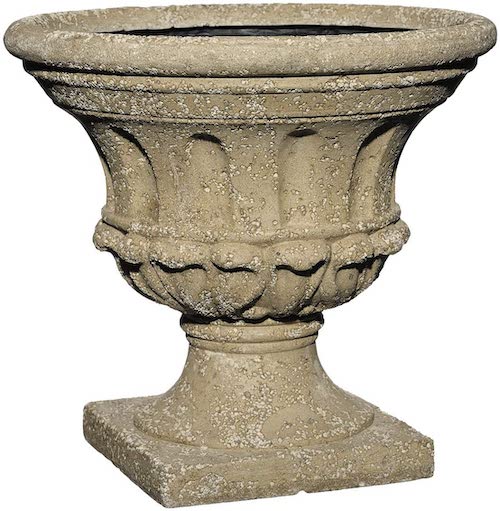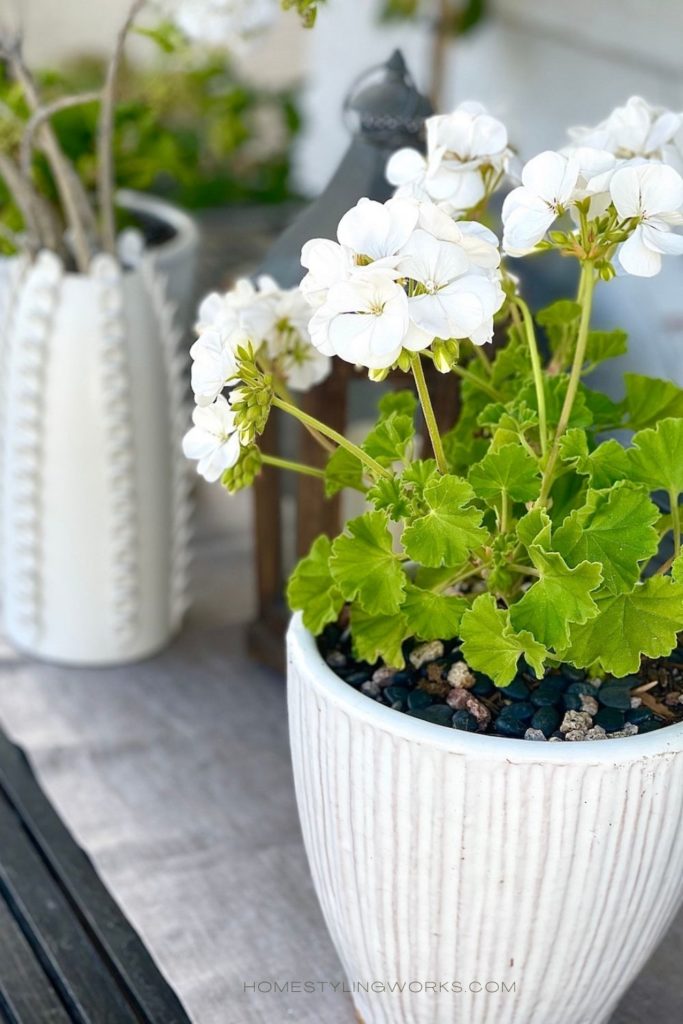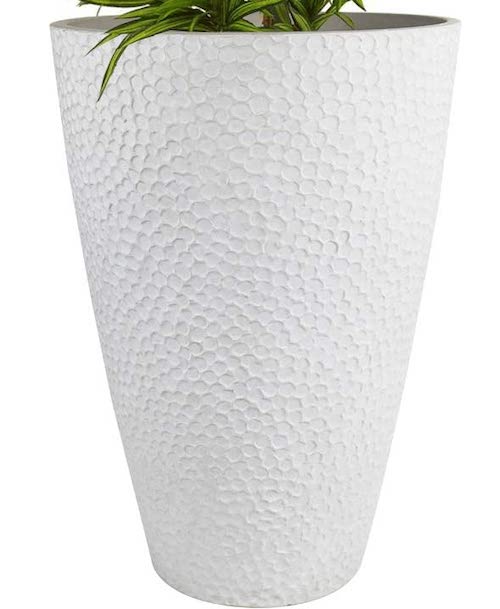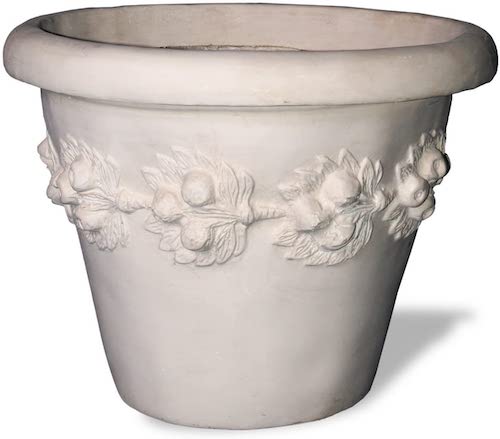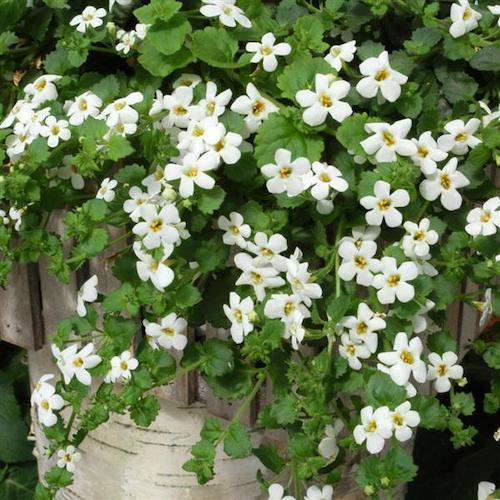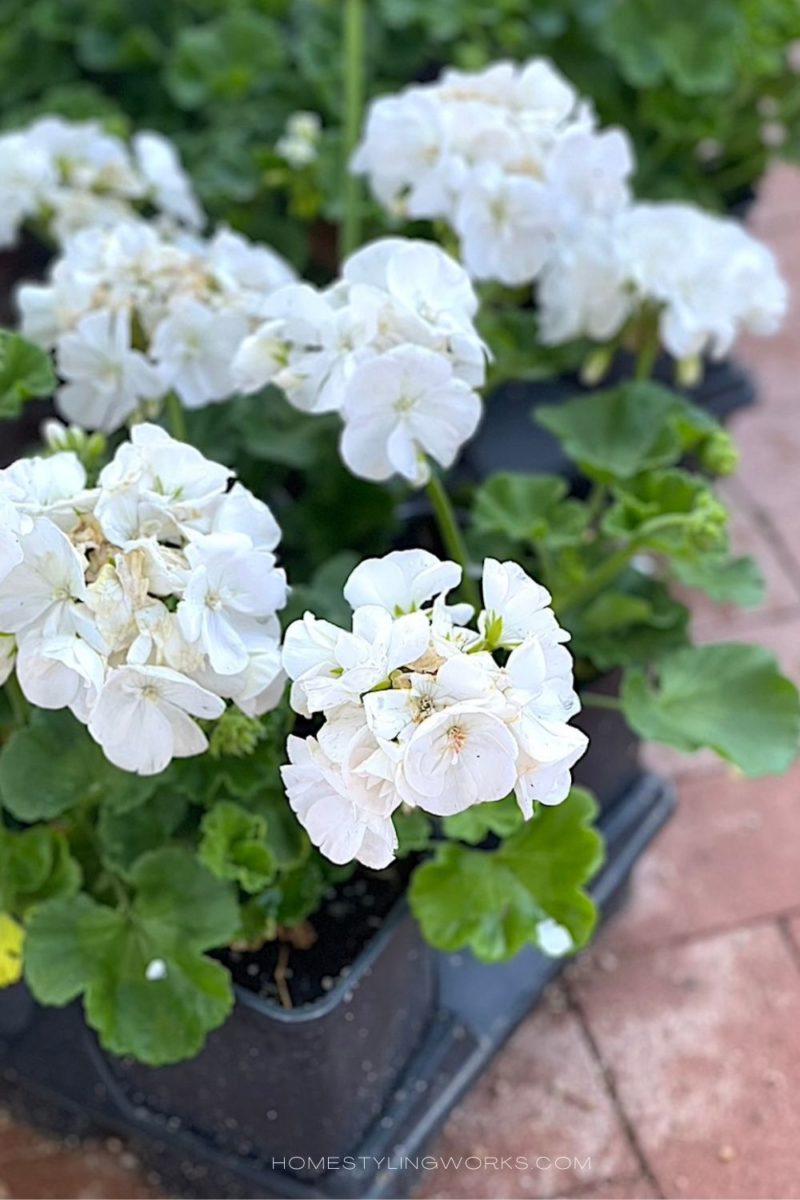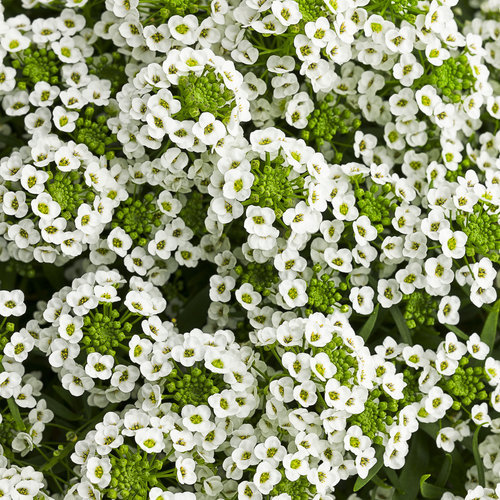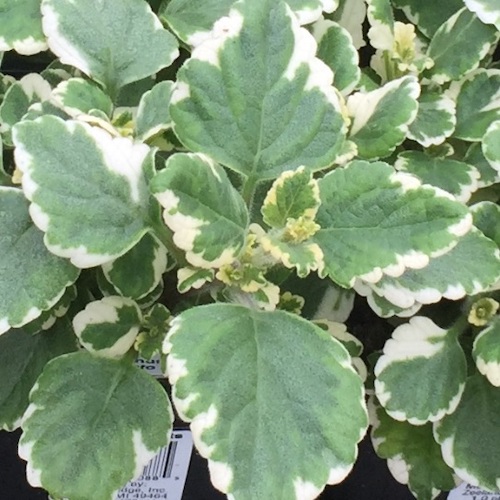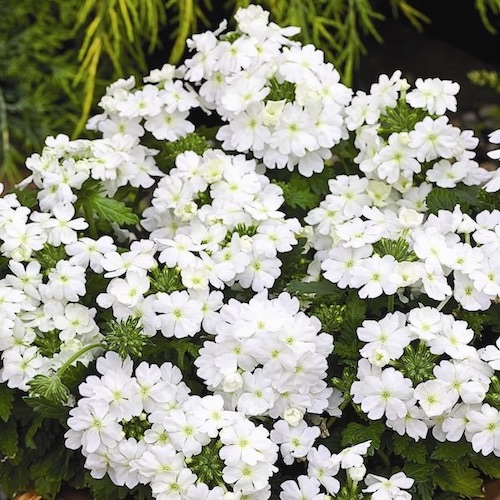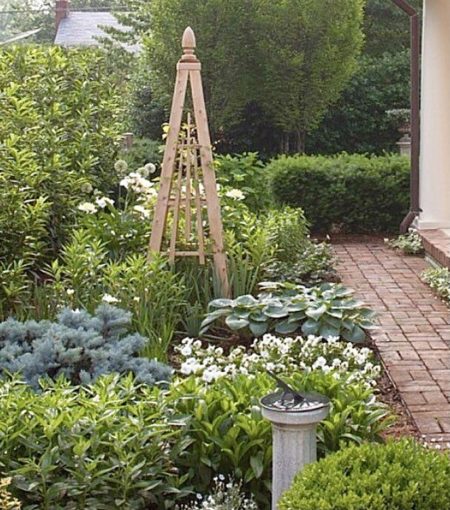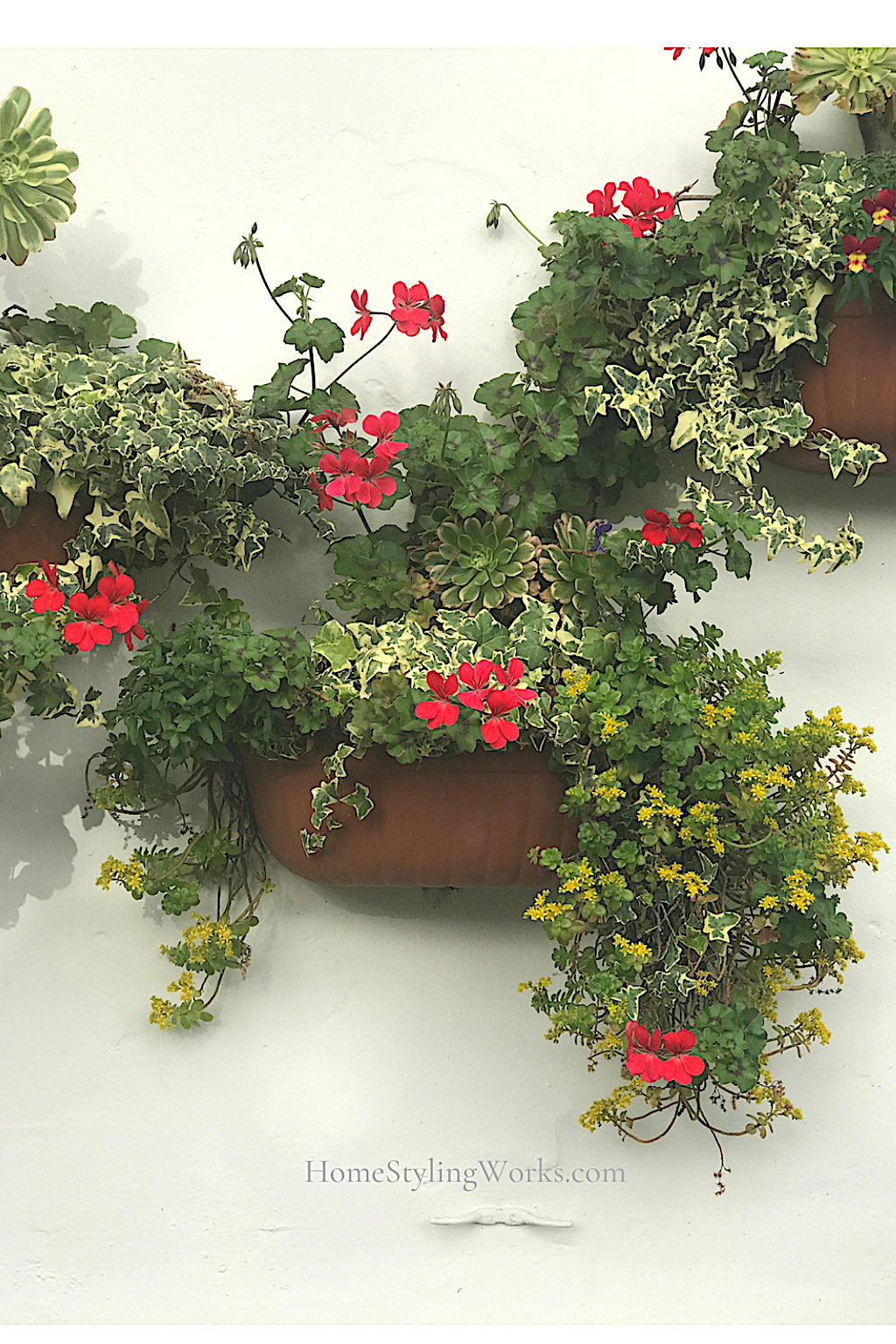BUT I PLANT GERANIUMS ALL THE TIME – IN CONTAINERS
Here’s a gardening confession: I didn’t always love geraniums – not with all the other fabulous flowers out there. Until I noticed something on my travels throughout Europe – there are geraniums in abundance! With one small catch – I’ve never seen them planted in the ground. They’re almost always planted in containers, and here’s what I think is the reason. No matter the size of the garden (or balcony or terrace), planters make gardening possible, even in the smallest of outdoor spaces. Geraniums show up in window boxes, balconies, ledges and entries all throughout Europe.
RIGHT: “Restoring A Home In Italy” by Elizabeth Minchilli
Geraniums are regularly spotted on balconies and ledges, as well – even in the most humble of cottages or apartments:
They’re also prominently featured surrounding European doorways, en masse (but always in containers).
And other times, they’re displayed in a huge mass, in different planters, as shown below:
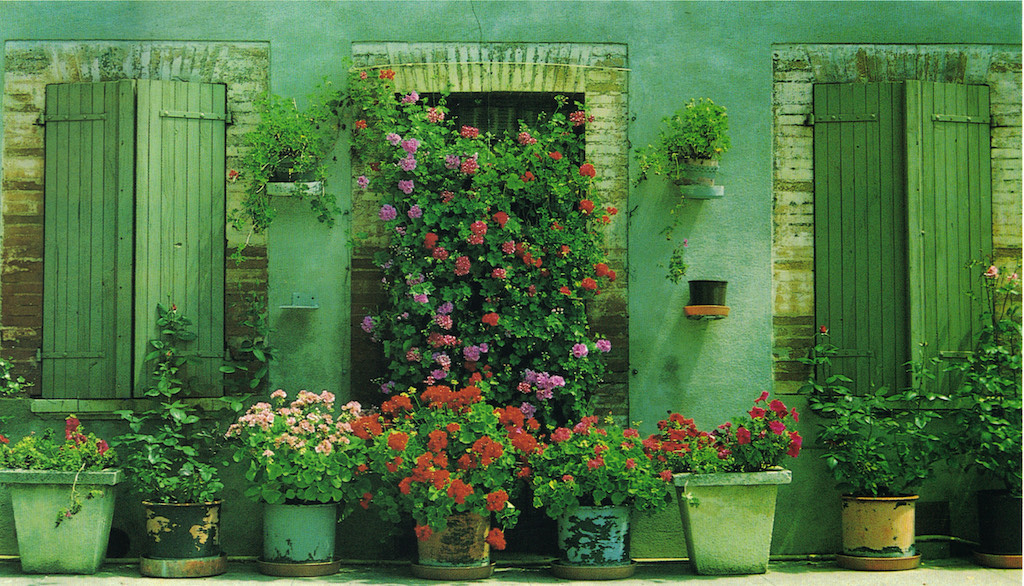
Or color-coordinated with the surrounding architecture in small European villages:
A solo potted geranium can even take center stage, when surrounded by beautiful architecture:
Geraniums are even planted in hanging containers on walls (a great idea for a courtyard garden!)
GERANIUMS IN GROUPINGS
After what I call my “geranium epiphany” in Europe, I realized that the spiky nature of geraniums naturally lend themselves to containers, where they also make friends easily with other sun-loving plants. I think they tend to look “straggly” when planted directly in the ground, but they’re “elevated” to a higher status when planted in a beautiful container. An advantage to growing geraniums in pots is that they can easily be moved around. I do this all the time in my garden – if a plant isn’t happy, it’s a lot easier to move a container than to dig a plant out of the ground and relocate it, with fingers crossed.
Geraniums also look stunning as part of a curated collection, like the images below. The planters can be simple terra cotta (aged, if possible) or more decorative basketweave patterns.
A QUICK GERANIUM PRIMER
In researching this post, I learned a few things about this under-appreciated flowering plant. According to Wikipedia, Geranium is a genus of 422 species of annual, biennial, and perennial plants that are commonly known as geraniums (or cranesbills).
They’ve been grown in Europe since the early 1600’s, when the gardener for King Charles I brought them back from their native South Africa. In 1786, Thomas Jefferson was so enamored with the geranium that he sent plants from France to horticulturist John Bartram in Philadelphia, who in turn introduced them to America. Because the climate was so different from their native South Africa, geraniums were commonly grown as an annual (or wintered over in glass greenhouses).
‘GERANIUM’ OR ‘PELARGONIUM’?
This was a real rabbit hole I went down, in researching geraniums vs. pelargoniums, so I’m going to distill the information I found. The zonal geraniums that are shown in the images above aren’t technically “geraniums” (meaning, a member of the Geranium family). Professional gardeners and botanists think of “geraniums” as the winter-hardy perennial plant. What we think of as “geraniums” (a/k/a the ones in the images in this post) are called “pelargoniums”. The confusion started when they were brought to Europe and were called geraniums, so over the years “geraniums” and “pelargoniums” all got lumped into the same category.
The geraniums I’m referring to in this post are annual plants or “Zonal” geraniums (meaning, they are good through one season). There are perennial geraniums (the plants that come back every year) and those are called Cranesbill. The main difference between the Cranesbill perennial geraniums and the Zonal “Pelargonium” annuals is the shape of the leaves and flowers. Also, perennial geraniums are almost always planted in the ground, as part of a larger landscape plan, whereas the annual geraniums – as I’m illustrating in this post – are well suited to containers.
Below are a couple of examples of the numerous varieties in the hardy perennial geranium/cranesbill family.
A VERY different plant than the zonal geraniums shown below.
If you go to your local nursery and ask for “geraniums”, you will likely be steered towards the annual varieties, unless you specify otherwise. This may or may not be useful information, but I felt out the need to point out the geranium/pelargonium situation.
ZONAL GERANIUM VARIETIES: UPRIGHT + TRAILING
In late spring, you’ll see zonal geraniums popping up all over garden nurseries, in a wide variety of colors – from pure white to classic red to various shades of pink. The leaves can either be glossy dark green, chartreuse lime-green, or a variegated mix. Below are a few varieties I spotted at my local nursery:
There’s a whole sub-species of trailing geraniums called Ivy Geraniums, as well, which make them great candidates for window boxes and wall planters.
ZONAL GERANIUMS: CARE + FEEDING
The best part of growing zonal geraniums is that they’re super-easy! They don’t require staking or constant care.
SUN REQUIREMENTS: Zonal geraniums are drought tolerant and love a location with at least 6 hours of direct sun (although they can tolerate some afternoon shade, especially in warmer climates).
ENCOURAGING MORE BLOOMS: They’re prolific bloomers, but you need to deadhead (remove) spent blooms, along with their stem, to give the plant energy to create more blooms. You simply break off the flower and its stem in one fell swoop – you don’t even need clippers to do this.
WATERING: The best way to kill geraniums is to over-water them – they don’t like soggy soil. Water when the top inch of soil is dry and you’re all set!
FEEDING: Geraniums are heavy feeders (meaning they need a balanced fertilizer to help them stay healthy). They need fertilizing in spring and summer – and you stop fertilizing at the end of summer. I fertilize my geraniums a couple of times a month with an organic fertilizer. This is my favorite fertilizer for flowers.
Now, onto how to make beautiful geranium container plantings.
IT ALL STARTS WITH THE CONTAINER
Geraniums don’t mind being root-bound, which is why they’re so well-suited for containers.
Since I’m talking about geraniums and their European settings, I’m sharing with you my favorite European-style containers.
CLASSIC GARDEN URNS
For more traditional gardens, a stately urn (either cast iron or frost-proof resin) makes a lovely container for geraniums. Any of these would also make a stunning centerpiece in a traditional garden (or as a pair flanking a front entry). Here are a few favorites:
CLICK IMAGES FOR PRODUCT LINKS
TRANSITIONAL PLANTERS
The containers I’ve curated below would be well-suited to all styles of gardens – from cottage to traditional. Note that these containers are on the larger size, which makes them ideal candidates for geraniums and other companion plants (such as the trailing white alyssum shown above).
CLICK IMAGES BELOW FOR PRODUCT LINKS
STYLING YOUR GERANIUMS
Although red geraniums are classic, I love an all-white, monochromatic look with fresh white geraniums. Here are a couple of examples:
You can easily re-create this “White Geranium Monochrome” look with the planters I’ve linked below. Note that I’ve included a couple of modern ceramic planters, as well as more traditional styles, in a limestone look made of frost-proof materials. All you need to do is add white geraniums, and you’re all set.
CLICK IMAGES BELOW FOR PRODUCT LINKS
PLANTER “RECIPES”
If you want to go “all in” on the white monochrome look, some other sun-loving companion plants for geraniums are white bacopa and alyssum. I also like to add a variegated foliage plant for interest – some good options are ‘Diamond Frost’ euphorbia, ‘Licorice Splash’ helichrysum or variegated plectranthus. The varying textures and shades of green and white let the geraniums be the superstar.
UP NEXT WEEK: MORE PLANTER “RECIPES”
I hope this post has inspired you to look at geraniums in a new way. In next week’s post, I’m sharing with you illustrated planter combinations featuring geraniums using my Styling By Numbers® method! Stay tuned!
